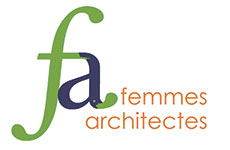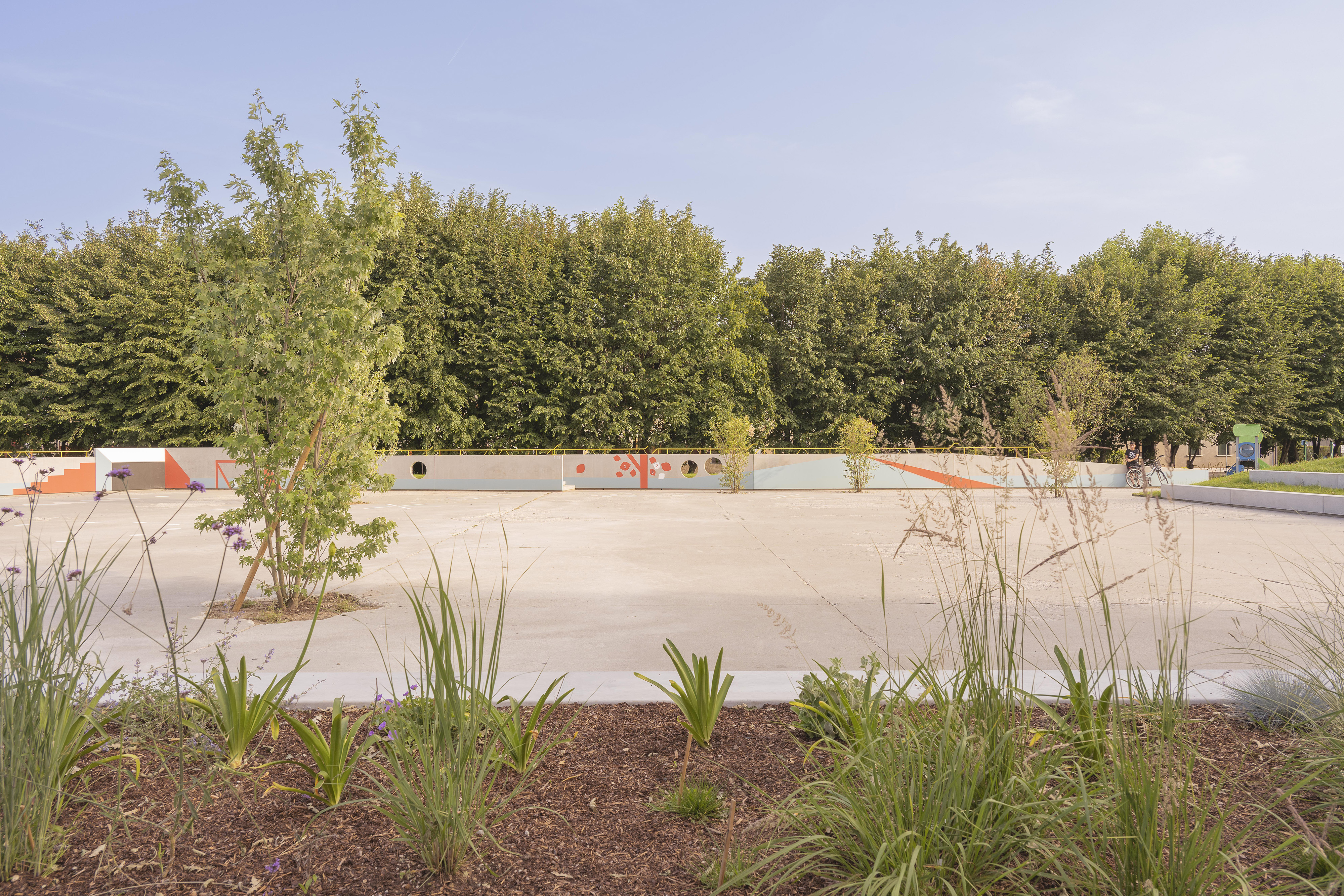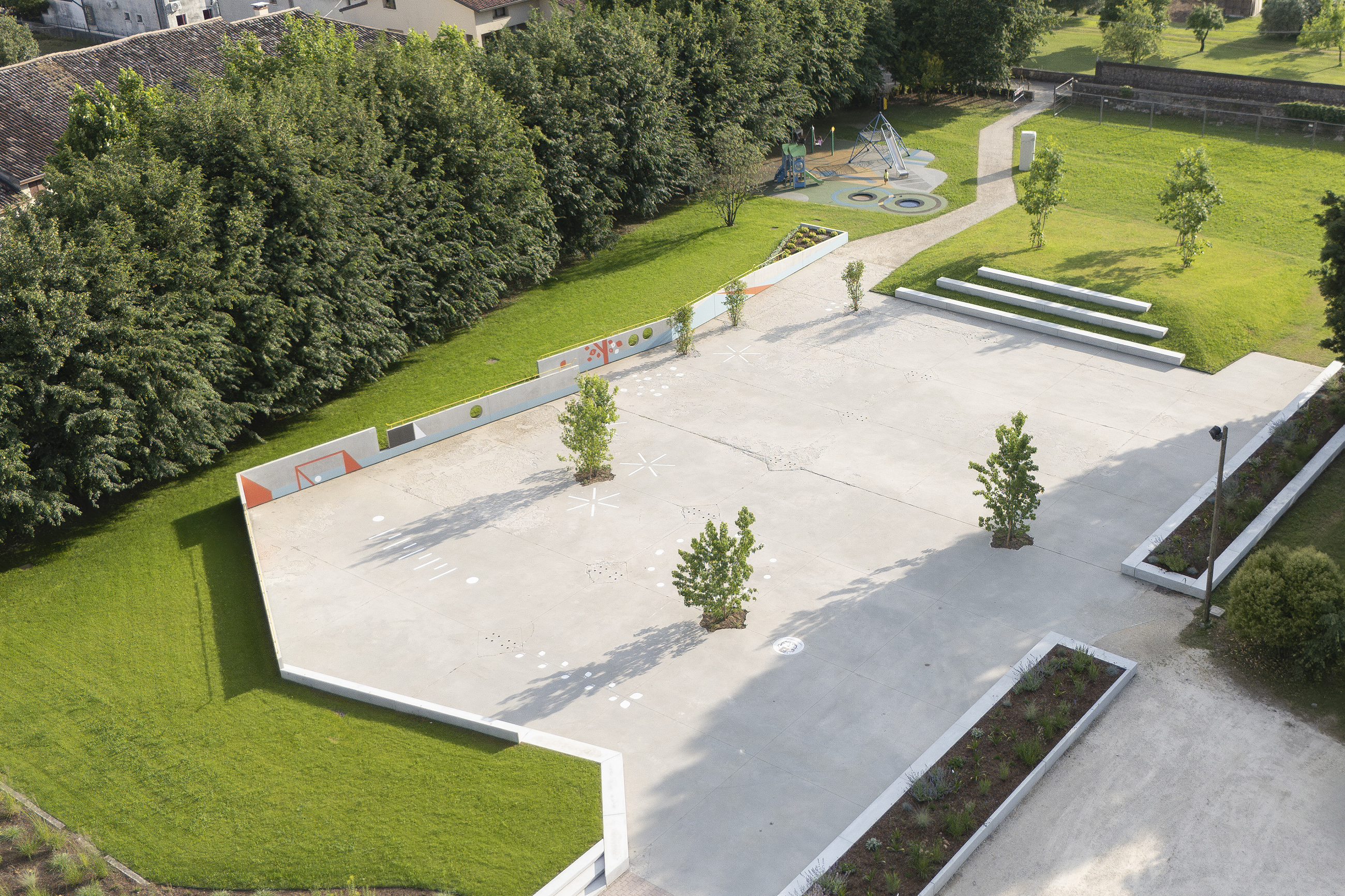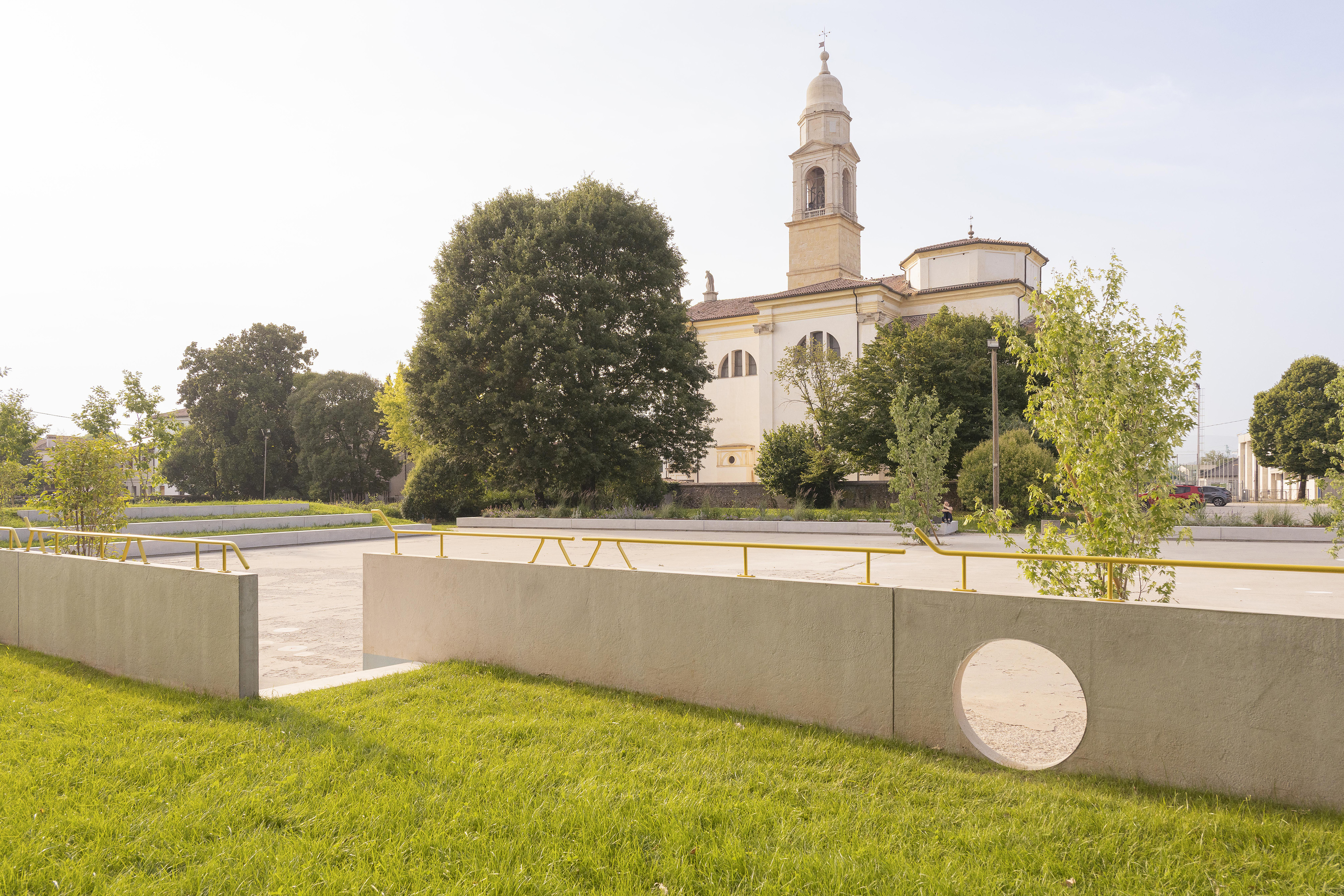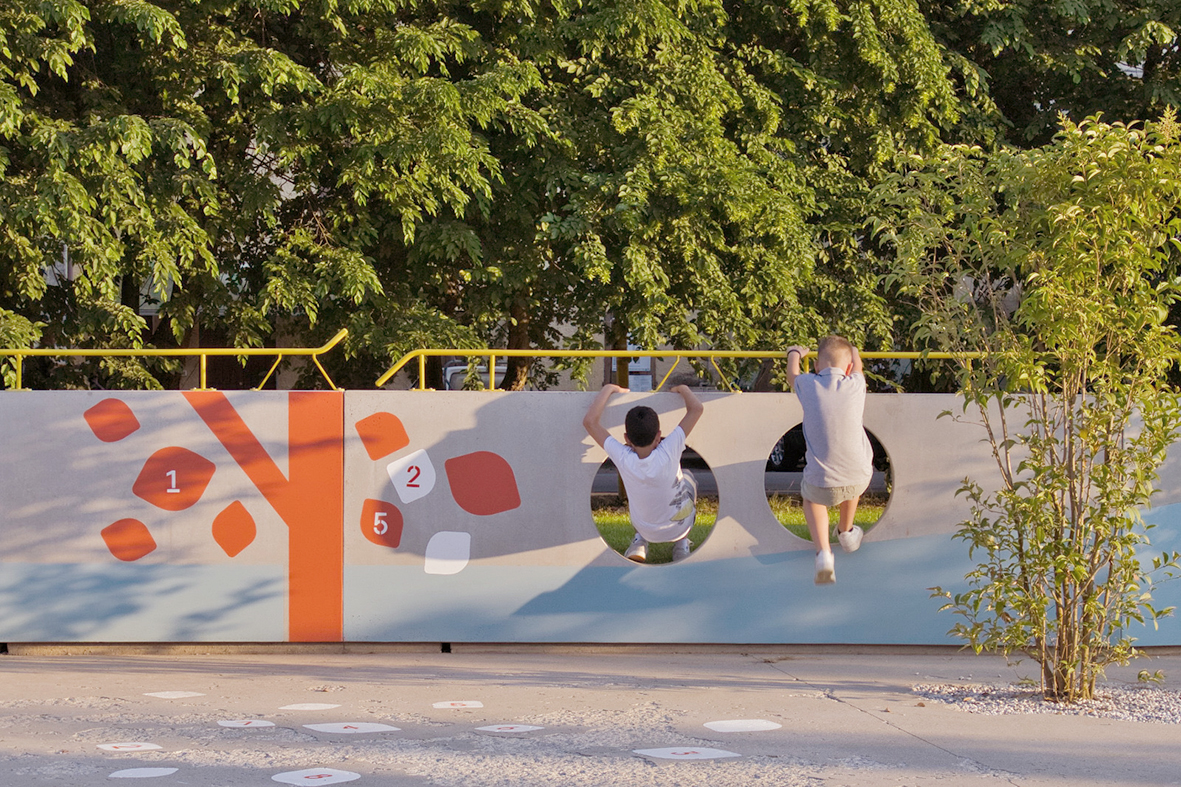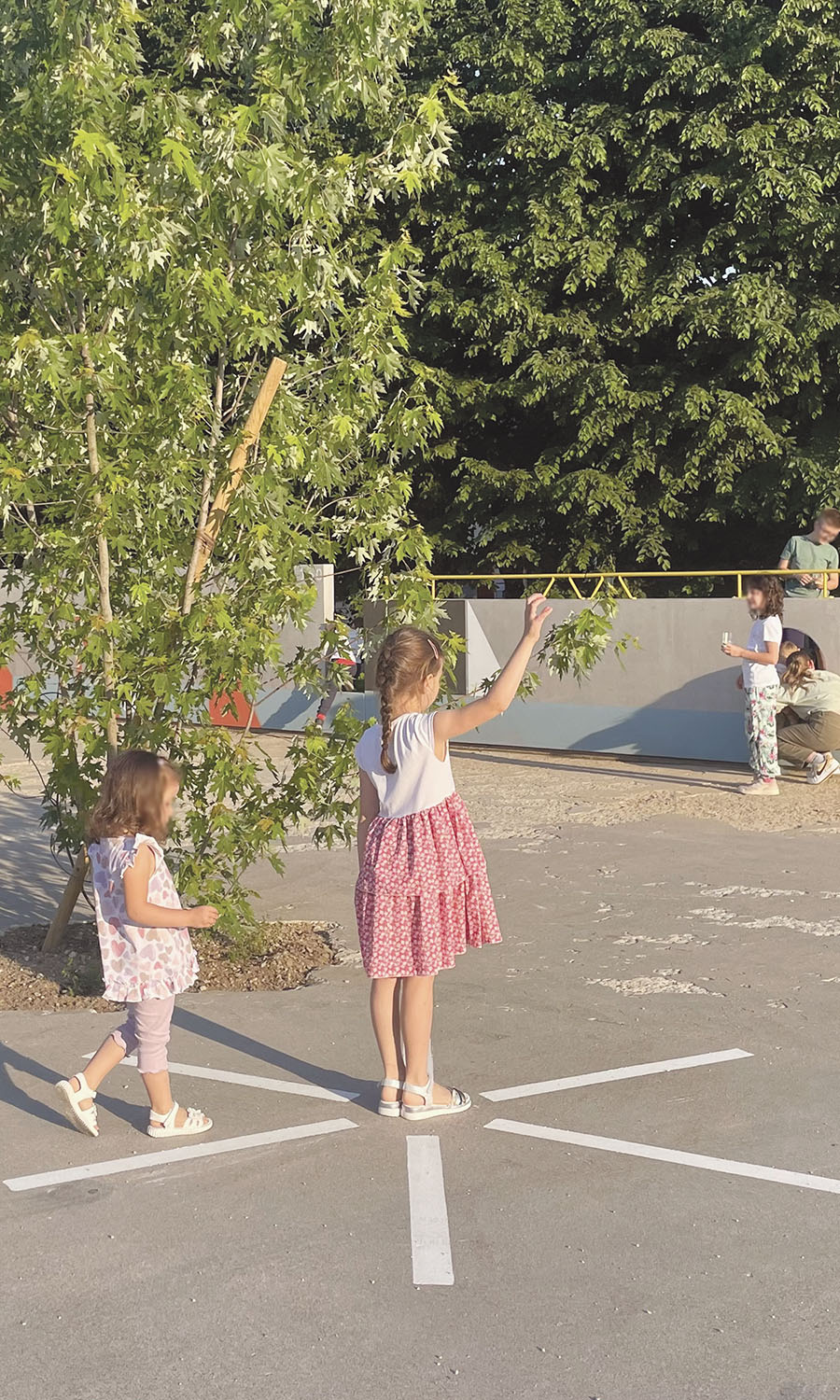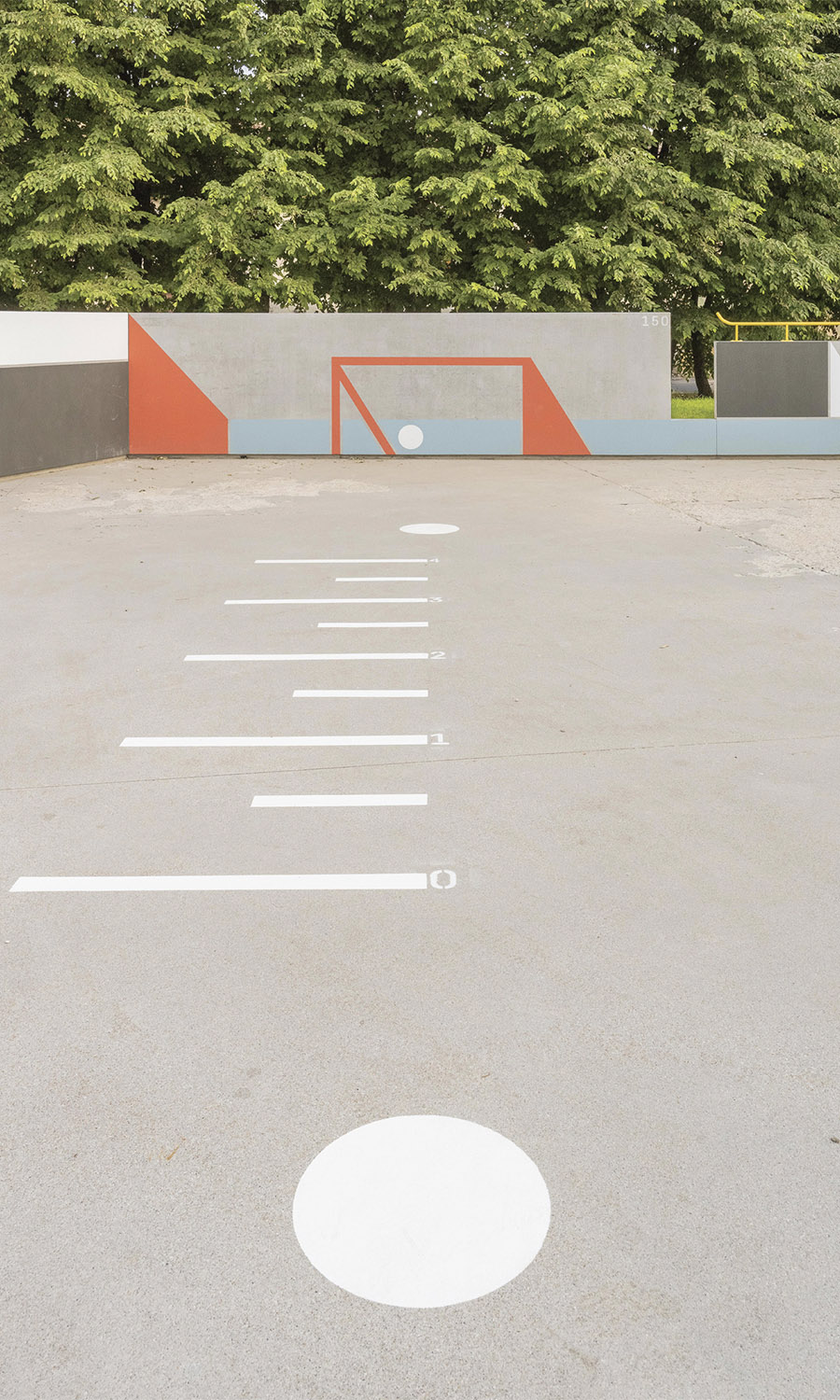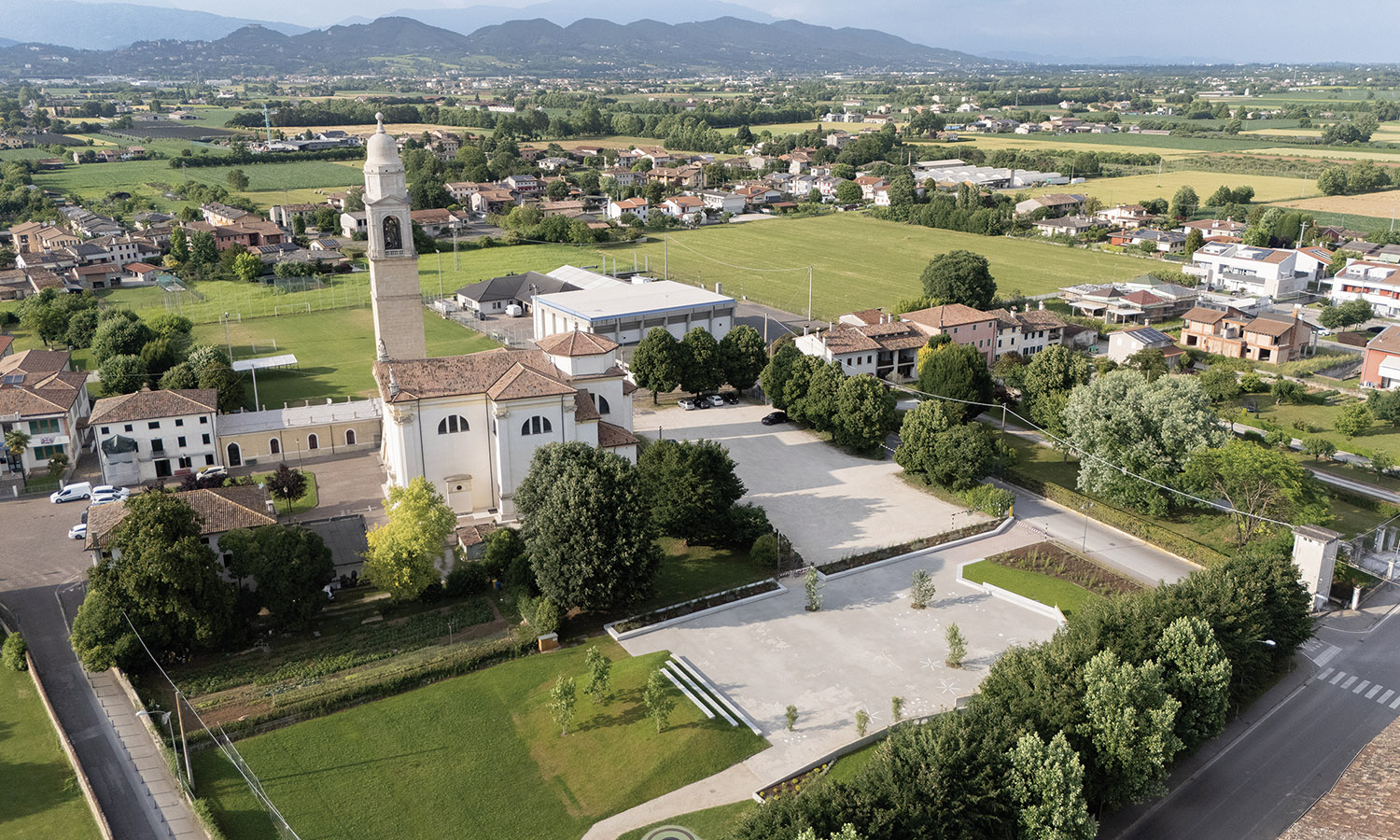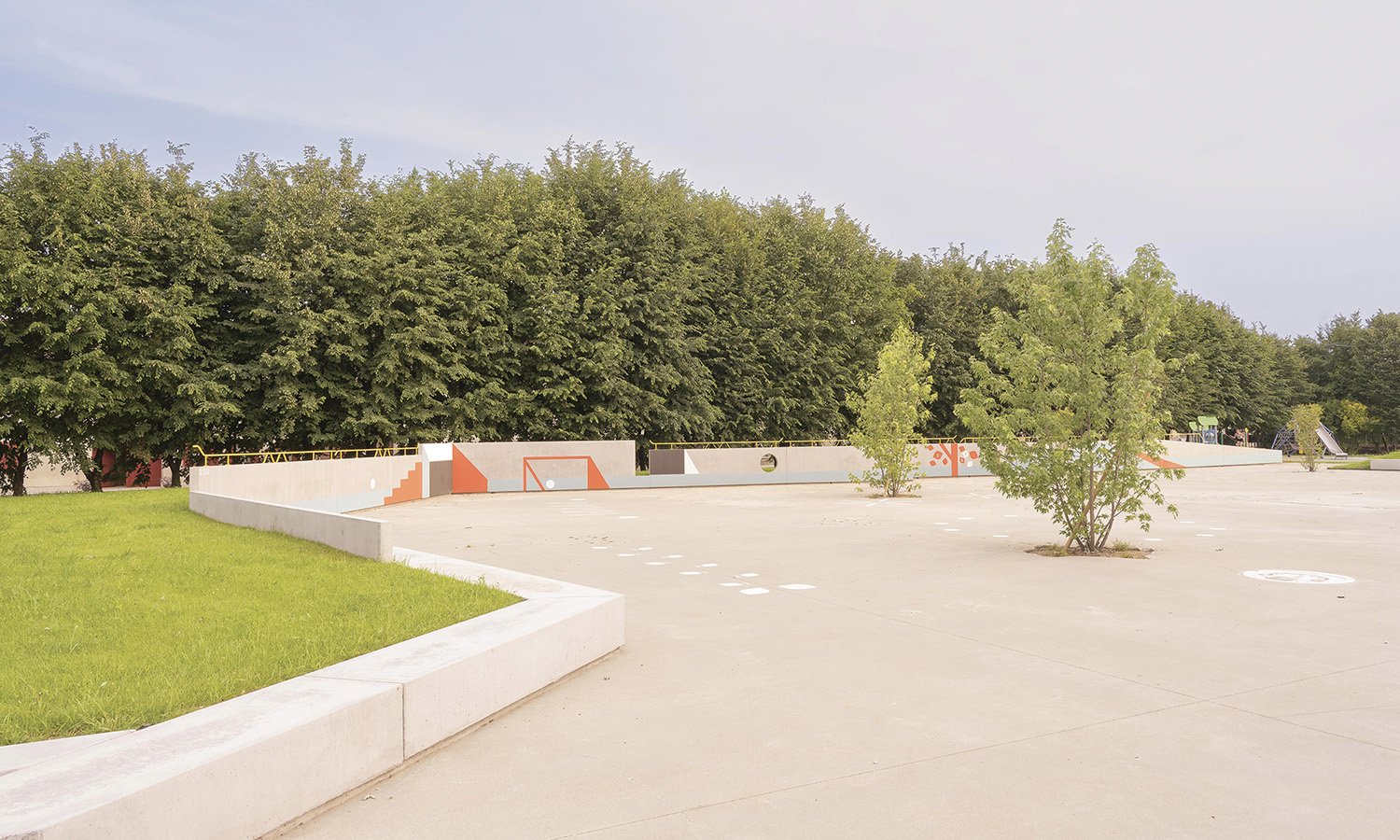Parco Don Gnocchi
Don Gnocchi Park was characterized by a concrete slab built in recent years to host public events. For the rest of the year the slab served as a parking lot. Although its complete removal was not feasible, the slab became an opportunity to reimagine the space.
The project takes shape by redefining the existing concrete slab with subtle earthworks that expand the grassy areas, creating a more inviting environment. Prefabricated concrete elements of varying heights and widths are used to introduce new features: linear benches, play walls, low walls, and on the west side, a stepped seating area designed to accommodate spectators during events held on the platform. Both the vertical and horizontal surfaces are painted with playful colours following the principles of Universal Design. The simple, imaginative patterns encourage open-ended play and creativity, welcoming users of all ages and abilities to play with free interpretation rather than fixed rules, evoking traditional street games.
The new configuration of the park’s access points redefines its circulation, strengthening connections with the surrounding urban context and enhancing spatial cohesion. It also improves the route for visitors moving from the town center to the Brion Memorial, located close by. Additionally, custom-designed signage, border elements, and railings have been developed as unique, cohesive components that help define the park’s identity.
The intervention has had a significant social impact on the area, transforming how the community feels the park: from a parking lot used only during summer festivals to a new, well-connected public space accessible year-round. Rather than erasing what was there, the project works by layering new uses onto the existing park.
Special attention was given to reusing demolition materials, such as interlocking pavers and the rubble from planting basins created in the center of the platform, repurposed as the foundation for the stepped embankment.
